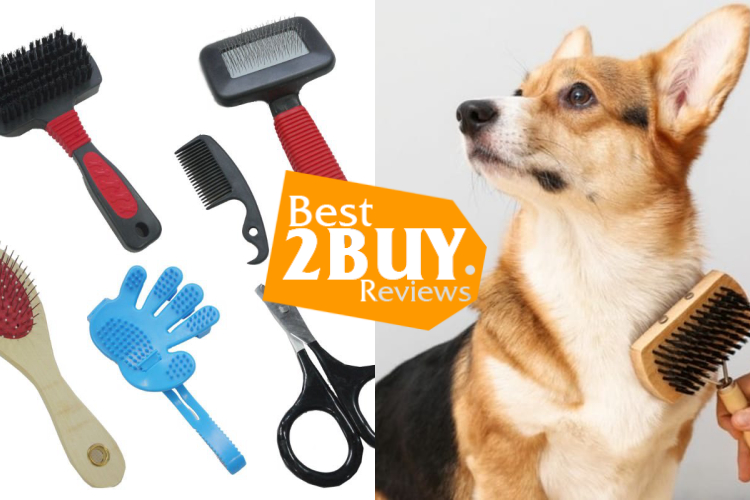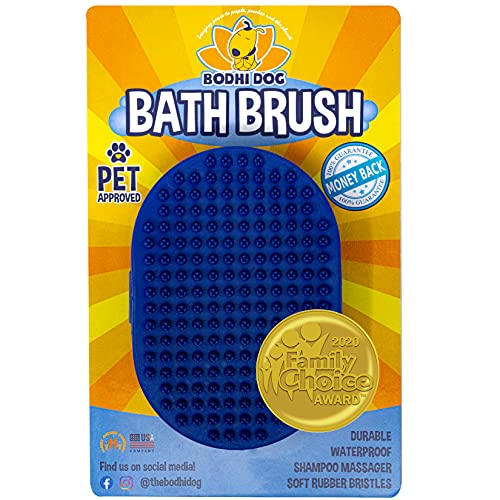Dog Shedding Tools: A Must-Have for Every Pet Owner

- 1. Dog Shedding Tools: A Must-Have for Every Pet Owner
- 1.1. Why Do Dogs Shed?
- 1.2. Types of Dog Shedding Tools
- 1.2.1. Slicker Brushes
- 1.2.2. Bristle Brushes
- 1.2.3. Pinhead Brushes
- 1.2.4. Undercoat Rakes
- 1.2.5. Rubber Brushes
- 1.2.6. Grooming Glove
- 2. What To Consider When Choosing A Dog Shedding Tool
- 3. Tips for Using Shedding Tools
If you happen to be a dog owner, you're likely well-acquainted with the ongoing struggle against the omnipresent presence of dog hair. Shedding is an inherent canine phenomenon, and though it may present challenges, there exists a range of tools designed to assist you in its proficient management. In this comprehensive manual, we shall delve into the various categories of dog shedding tools and offer guidance on selecting the ideal one for your beloved canine companion.
Why Do Dogs Shed?
Prior to delving into the topic of shedding tools, it is crucial to grasp the underlying reasons behind why dogs shed. Shedding constitutes a natural phenomenon that enables dogs to eliminate old or damaged hair and subsequently replace it with new growth. This process plays a vital role in regulating their body temperature and maintaining the health of their skin. The extent of shedding can fluctuate based on factors such as the dog's breed, the season, and its overall health.
Types of Dog Shedding Tools
There is a wide variety of dog brushes available in the market, each serving specific purposes. We have compiled a list of the most common types and their respective uses.
Slicker Brushes
Slicker brushes are equipped with brush heads covered in short, closely-packed wire pins angled to penetrate the coat without harming the skin. These brushes are suitable for dogs with medium, long, wire, or curly coats. They excel at removing mats and preventing their formation by eliminating loose hair. It's important to use a gentle touch with slicker brushes to avoid causing discomfort to your dog.
Bristle Brushes
Bristle brushes feature numerous natural or synthetic bristles and are ideal for short-coated dogs, including those with short, silky fur. They effectively remove loose hair and dander while stimulating the skin. Bristle brushes can also be used as a finishing brush for double-coated breeds to smoothen the coat and enhance its shine.
Pinhead Brushes
Pinhead brushes closely resemble human hairbrushes, with medium-spaced wire pins covering the brush head, often featuring rubber tips to prevent skin irritation. Although not the most versatile option, they are suitable as finishing brushes for long-coated breeds, helping smooth the hair and remove dirt. They are also effective for untangling the fur of wire-coated dogs. Some double-sided dog brushes combine pinhead brushes with bristle brushes.
Undercoat Rakes
Undercoat rakes come with one or two rows of metal pins designed to reach the undercoat and remove loose fur, as well as prevent matting. These rakes can be used on double-coated breeds with varying fur lengths. It's important to select the appropriate pin length for your dog's coat. Additionally, wide-toothed combs can aid in the removal of mats and tangles.
Rubber Brushes
Rubber brushes feature short, flexible rubber bristles and are primarily suitable for short-coated dogs. They are less effective on long or thick coats. Rubber brushes provide a gentle massage to the skin and help bring dirt and loose hair to the surface, which can then be removed with a bristle brush. You can also use a soft, rubber grooming mitt that fits over your hand to eliminate dead hair and dirt from your dog's coat.
Grooming Glove
Grooming gloves offer a convenient alternative for dogs that may not enjoy traditional brushes. These gloves come with rubber or silicone bristles on the palm and fingers, allowing you to pet and groom your dog simultaneously. They are gentle on the skin and can be used for both short and long-haired breeds.
What To Consider When Choosing A Dog Shedding Tool
Understanding Your Dog's Coat Type
The first step in choosing the right shedding tool is gaining a clear understanding of your dog's specific coat type. Different breeds exhibit a wide range of coat characteristics, each requiring a specialized tool for effective removal of loose fur. Some dogs have short, sleek coats, while others sport long, dense ones. Additionally, certain breeds have double coats, consisting of a thick undercoat and a longer topcoat. By comprehending your dog's coat type, you can streamline your options and select a tool designed to meet your dog's unique grooming needs.
Taking Your Dog's Sensitivity into Consideration
When selecting a shedding tool, it's essential to take your dog's sensitivity into account. Some dogs have delicate skin and may find certain tools uncomfortable or irritating. For dogs with sensitive skin, opt for a shedding tool equipped with softer bristles or teeth to prevent discomfort or skin irritation. Furthermore, it's advisable to start with a gentle approach and gradually increase the grooming intensity to ensure your dog's comfort.
Reading Reviews and Seeking Recommendations
Before making your final purchase decision, invest time in reading reviews and seeking recommendations from other dog owners or professionals. Online reviews provide valuable insights into the effectiveness and durability of various shedding tools. Additionally, consulting with your veterinarian or a professional groomer can help you make an informed choice based on your dog's unique requirements.
Testing the Tool on Your Dog
Once you've narrowed down your options, it's a good idea to conduct a trial run of the shedding tool on your dog before committing to a purchase. This allows you to evaluate your dog's response to the tool and its effectiveness in removing loose fur. Pay close attention to your dog's body language and ensure their comfort during the grooming process.
Considerations Regarding Cost
The cost of dog shedding tools can vary depending on the brand, quality, and type of tool you are looking for. Here are some common dog shedding tools and their approximate price ranges:
- Deshedding brush: Deshedding brushes are designed to remove loose hair from your dog's coat. Prices can range from $10 to $40, depending on the brand and size of the brush.
- Undercoat rake: Undercoat rakes are useful for removing loose hair from the undercoat of double-coated breeds. Prices typically range from $10 to $30.
- Slicker brush: Slicker brushes are great for removing tangles and mats from your dog's coat. Prices can vary from $5 to $30, depending on the size and quality of the brush.
- Shedding blade: Shedding blades are effective for removing loose hair and thinning out the coat. Prices usually range from $5 to $20.
- Grooming gloves: Grooming gloves are a convenient option for removing loose hair while petting your dog. Prices can range from $5 to $20.
Tips for Using Shedding Tools
To maximize the effectiveness of your shedding tool, remember the following guidelines:
- Maintain a Regular Grooming Schedule: Establish a consistent grooming routine to promote your dog's coat health and minimize shedding. The frequency of grooming sessions should align with your dog's breed and coat type.
- Handle with Care: Employ gentle strokes when employing shedding tools to prevent discomfort or skin irritation. Pay close attention to your dog's body language and adapt your technique accordingly.
- Eliminate Mats and Tangles: Prior to using a shedding tool, eliminate any mats or tangles from your dog's fur. This will prevent the tool from getting caught and causing your dog discomfort.
- Reward Your Canine Companion: Transform grooming into a positive experience for your dog by offering treats or words of praise. This will help them associate grooming sessions with enjoyment.
In conclusion, for any dog owner seeking to maintain a clean home and ensure their canine companion's coat stays in top condition, dog shedding tools are indispensable. By selecting the appropriate tool and employing correct grooming methods, you can efficiently control shedding while promoting the well-being of your furry friend. Always keep in mind the importance of patience and transforming grooming sessions into bonding moments with your cherished pet.











